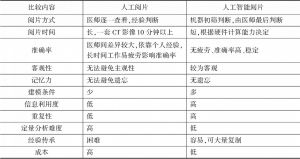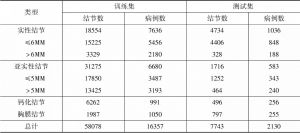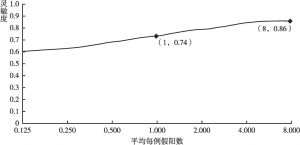报告
人工智能在肺结节诊断中的应用
摘要
人工智能(Artificial Intelligence,AI)是计算机科学的一个分支,通过计算机、生命科学、临床医学等技术手段使机器具备感知、分析、推理和决策等人类智能的产品和相关服务。经过数十年的发展,随着基于深度学习的神经网络的出现,人工智能在涉及高维度的大数据处理的多种任务领域中表现出了超越人类的性能,使得近年来相关理论研究、应用测试、落地推广的速度和范围大幅度增加。在医学影像分析领域,人工智能已广泛涉及多种数据形式,包括放射影像、超声影像、病理图像、内窥镜影像等,同时相关医疗辅助应用也已迅速从理论实验阶段过渡到临床试用阶段。在目前实现落地的应用中,基于深度学习神经网络的肺部放射影像分析与辅助诊断已较为成熟,已有较为广泛的商品化临床试用。本文以肺结节的人工智能辅助诊断为主要切入点,综述医学影像识别的临床应用现状及发展,并思考与展望未来进入“深水区”的医学影像人工智能将如何健康发展,如何完善产品形态,如何适用于多种临床场景并解决实际痛点,提高影像科医生的工作品质和效率。
作者
夏晨 ,北京推想科技有限公司先进研究院人工智能研究员,主要研究方向为医学人工智能。
张荣国 ,博士,北京推想科技有限公司先进研究院院长。
刘凯 ,长征医院影像科主治医生,上海医学会医学人工智能学组委员。
刘士远 ,教授,海军军医大学长征医院影像医学与核医学科主任,主任医师、教授,博士研究生导师,担任亚洲胸部放射学会候任主席,中华医学会放射学分会候任主任委员,中国医师协会放射医师分会副会长。
Xia Chen
Zhang Rongguo
Liu Kai
Liu Shiyuan
检索正文关键字
报告目录
-
一 医学影像识别的临床应用现状
- (一)临床痛点
- 1.医疗资源不足
- 2.医学影像领域专业医生缺口巨大
- 3.医学影像误诊率偏高
- 4.医学影像诊断效率低
- (二)发展优势
- 1.庞大的医疗影像数据量
- 2.技术快速迭代,算法日益成熟
- 3.国家政策的大力支持
- 4.资本大量入场
- (三)应用场景
- 1.病灶区域识别与标注
- 2.靶区自动勾画与自适应放疗
- 3.影像三维重建
- (一)临床痛点
- 二 肺结节人工智能的现状及发展
- 三 人工智能展望
相关文献
查看更多>>>





